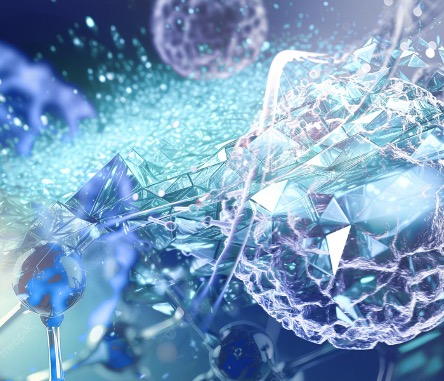CPHI Online is the largest global marketplace in the pharma ingredients industry
-
Products551,744
-
Companies7,781
-
Articles11,636
-
Events8
-
Webinars342
APIs (Active Pharmaceutical Ingredients)
APIs (Active Pharmaceutical Ingredients) Companies (396)
APIs (Active Pharmaceutical Ingredients) News
-
News Viral marketing for B2B pharma businesses: a CPHI Online case study
Discover how a Chinese chemical manufacturing company went viral on TikTok, and what their viral success means for the future of B2B digital marketing for the wider pharmaceutical industry and supply chain.24 Jun 2024
APIs (Active Pharmaceutical Ingredients) Products (500+)
-
Product Schedio Personalized Micronization
Micronization, a widely adopted solution for enhancing bioavailability through particle size reduction, involves utilizing pressurized gas to induce particle collisions. Recognizing the variability in powder properties like flowability and strength, which influence machine performance, the process necessit...-comp316140.jpg)
-
Product Opposed Jet Mill
Schedio Opposite Jet Mill, is a machine engineered for the micronization of dry powder to particle sizes below 10 microns. Employing a frontal collision mechanism with pressurized process gas, this unit achieves particle size reduction and precise control over the final distribution.
Designed ...-comp316140.jpg)
-
Product Hyaluronic Acid/Hyaluronan/Sodium Hyaluronate
Hyaluronic Acid, is a biological polymer that is naturally present in the human body. It’s been used for decades in medical devices in an array of therapeutic fields including ophthalmology, rheumatology, aesthetic medicine. New fields for this highly effective API are continuin...
-
Product TECA™ Pharma
First Centella asiatica extract to be used for medicinal applications, TECA™ Pharma comes with a 50-year track record of use in drug products for wound healing and venous insufficiency.
• INCI: Asiaticoside - Madecassic Acid - Asiatic Acid • 40% Asiaticoside, 60% Genins • Powder form • From 0.1 ...
-
Product Nicorandil
In July 2023, nicorandil verifiy and certify by the CFDA API quality and can be used in the production of preparation, and nicorandil is used for the treatment of angina. The percent of nicorandil which in our product exceeds 99.0%.
-
Product Norepinephrine Bitartrate
Norepinephrine is a sympathomimetic used in the control of blood pressure during various hypotensive states and as an adjunct treatment during cardiac arrest.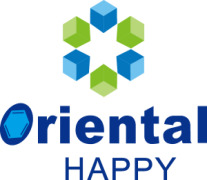
-
Product Trypsin
BGB can supply Trypsin of EP/BP/USP standard with customizable specifications, from either porcine or bovine source.

-
Product Taste Masked Coated Granules of Clarithromycin & Azithromycin
White to off white tasteless free flowing granules
Recommended for Dry Syrup / Suspension
Available Acitivies are 22.22% & 26%
-
Product Ferrous Bisglycinate
Dr. Paul Lohmann GmbH & Co. KGaA offers a wide range of Iron products. Please contact us for more Information. -
Product ECTive™ MD
Ectoin is a powerful molecule, an osmolyte produced by naturally occurring extremophile bacteria in order to protect themselves from exogenous stresses, such as UV rays or the excessive salinity of the environments in which they live.
It is a naturally active and multifunctional substance able t...
-
Product Acepromazine maleate [vet]
WELDING GmbH & Co. KG founded in 1955, independent, family-owned. Global marketing, sourcing and distribution of APIs for human and veterinary medicines, additives for the food and feed industry.
Development of finished products, including services related to IP evaluation, regulatory affairs ...
-
Product APETAMIN
Til healthcare pvt ltd provides wide range of appetite stimulant which includes apetamin. Feature: cyproheptadine + multivitamin + lysine. Dose: 2 mg. Dosage form: syrup. Shelf life: 18. Packaging: 120 & 200 ml. Contact us for more informations.
-
Product Venetoclax
We offer an integral secure solution as your startegic partner of Venetoclax.
Venetoclax (CAS 1257044-40-8) is a targeted therapy drug used to treat chronic lymphocytic leukaemia (CLL), manufactured in our unique European GMP manufacturing plant located in Barcel...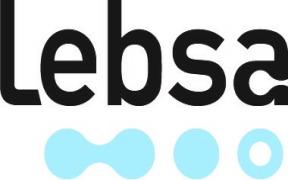
-
Product HPAPI Platform
Responding to the rising number of custom HPAPIs demand, Angelini Fine Chemicals expands its HPAPI capacity. With over 50 years of CDMO experience, Angelini Fine Chemicals is at the forefront of chemical development and cGMP manufacturing of HPAPIs to serving brand pharmaceutica industry. The new Angel...
-
Product Highly Potent API
CARBOGEN AMCIS has state of the art facilities and controls to handle both drug substance and drug product of the highest potency and toxicity, under cGMP. Our dedicated containment facilities use a containment methodology, utilizing barrier isolation technology and Rapid Transfer Ports (RTPs), combined wi...
-
Product Sodium lactate solution
Sodium lactate solution is mainly used to regulate the balance of electrolytes in the human body and it also works to treat dehydration caused by diarrhea and poisoning caused by diabetes and gastritis. Sodium lactate is used for oral drug as well as injectable one. Clinically, sodium lactate solution is a...
-
Product Valsartan
Resolution Limited offers a wide range of products which includes Valsartan. Contact us for more information.
-
Product Calcium gluconate
This product is available in two different grades, for oral and injection.
Calcium gluconate, as a medication, can supplement calcium and prevent/treat calcium deficiency disorders such as osteoporosis, tetany, skeletal dysplasia, and rickets.

-
Product KRILIXIR Krill Oil
INGREDIENTS:
Lipid extract of Antarctic krill, Gelatin, Glycerin.
The food supplement is applied as an aid to the diet, which:• helps regulate cholesterol levels;• helps the optimal functioning of the cardiovascular system;• helps maintain normal cognitive function;• helps to improve live...
-
Product Carbomer 971P
Application: For pharmaceutical excipients such as tablet binders, suspension stabilizers, extended-release polymers, mucoadhesive aids, and bioavailability enhancers etc.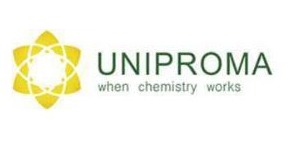
-
Product OMYAPURE® 35 - OG
OMYAPURE® 35 - OG is an API. A high purity natural calcium carbonate, manufactured from selected mineral.
-
Product Modafinil
Modafinil is a CNS stimulant medication used to treat sleepiness due to narcolepsy, shift work sleep disorder, and obstructive sleep apnea.
-
Product Fumed Silica
Product description.
EMRASIL200 is a medium surface Fumed Silica, Synthetic,hydrophilic, amorphous silica,also named as Colloidal SiliconDioxide. Produced via flame hydrolysis.
Special features
White colloidal powder of high purity.
Tasteless, colorless, odorless;...
-
Product Nafamostat mesylate
Nafamostat mesylate is a treatment for anticoagulant for acute pancreatitis that has shown steady growth since it was released domestically in 2004.It was mainly used in several Asian countries and recorded sales of 14.4 billion won in Korea in 2019. Our company has registered KDMF for the first time ...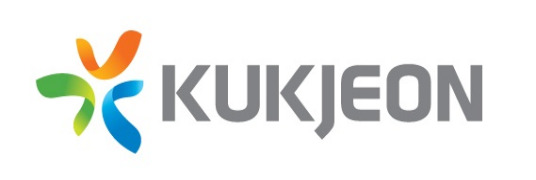
-
Product Piroxicam 10, 20 mg
FLAMINGO PHARMACEUTICALS LIMITED provides wide range of pharmaceutical products which includes piroxicam 10, 20 mg. for US market from USFDA approved site Contact us for more information.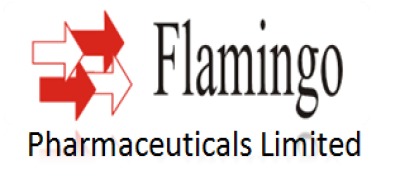
-
Product (2S,3S)-3-Amino-2-hydroxy-4-phenyl-butyric acid
Flamma Spa offers a wide range of various other intermediates which includes (2s,3s)-3-amino-2-hydroxy-4-phenyl-butyric acid. Alternative compound name: (2s,3s)-h-apns-OH. Contact us for more information.
-
Product Thio-Tepa
Tiefenbacher api & ingredients gmbh & co offers a wide range of products which includes thio-tepa. Contact us for more information.
-
Product Tailored Containment Systems
In today's evolving pharmaceutical landscape, the surge in demand for HPAPI amplifies the urgency for dependable containment methodologies.
Our commitment is clear: to safeguard operators against increasing operative exposure levels while delivering custom-fit, state-of-the-art containment sol...-comp316140.jpg)
-
Product Sepitrap™
SEPPIC SA offers a wide range of products which includes sepitrap™. Features: it can be used to formulate tablets by direct compression but can also be used in the formulation of hard capsule. Contact us for more information.
-
Product Sepifilm™ Pw
SEPPIC SA offers a wide range of products which includes sepifilm™ pw. Applications: it can be used for pharmaceutical applications and are manufactured in accordance with the good manufacturing practices (gmp) applicable to excipients. Contact us for more information.
-
Product Pc-10 Starch
SEPPIC SA offers a wide range of products which includes pc-10 starch. Applications: it has stabilizer for moisture-sensitive drugs. Contact us for more information.
-
Product Sepifilm™ Sc
SEPPIC SA offers a wide range of products which includes sepifilm™ sc. Features: it provides a high-quality, fine and glossy film coating. Contact us for more information.
-
Product Pharmacoat®
SEPPIC SA offers a wide range of products which includes pharmacoat®. Features: it is excellent, easy to use film-forming agent. Contact us for more information.
-
Product Rebaten 97%
SEPPIC SA offers a wide range of products which includes rebaten 97%. Features: it contains the steviol glycosides: rebaudiosides a, c, d, e; dulcosides a, b; stevioside; steviolbioside. Contact us for more information.
-
Product Neusilin®
SEPPIC SA offers a wide range of products which includes neusilin®. Features: it is used for improvement of the quality of tablets, powder, granules and capsules. Contact us for more information.
-
Product Hpc
SEPPIC SA offers a wide range of products which includes hpc. Features: it is used as an excipient and a process aid for manufacturing of pharmaceutical solutions. Contact us for more information.
-
Product Montanide™ Range
SEPPIC SA offers a wide range of products which includes montanide™ range. Features: it can used in about 300 clinical trials from phase i to phase iii. Contact us for more information.
-
Product Oramix
SEPPIC SA offers a wide range of products which includes oramix. Features: it can be used to solubilize antimicrobial active agents without altering their properties. Contact us for more information.
-
Product Metolose® Sm 4
SEPPIC SA offers a wide range of products which includes metolose® sm 4. Features: it is used at a concentration of 7% in aqueous medium. Contact us for more information.
-
Product Metolose® Sh/Sm
SEPPIC SA offers a wide range of products which includes metolose® sh/sm. Features: it is used for their thickening and viscosity-enhancing properties. Contact us for more information.
-
Product Sepifilm™ Sn
SEPPIC SA offers a wide range of products which includes sepifilm™ sn. Features: it can only be used for pharmaceutical applications. Contact us for more information.
-
Product L-Hpc
SEPPIC SA offers a wide range of products which includes l-hpc. Features: it has compatible with many active ingredients due to its non-ionic nature. Contact us for more information.
-
Product Hp (Hpmc-P)
SEPPIC SA offers a wide range of products which includes hp (hpmc-p). Features: it can be adjusted depending on the phthalyl group content. Contact us for more information.
-
Product Doxylamine succinate
Doxylamine is an antihistamine used to treat sneezing, runny nose, watery eyes, hives, skin rash, itching, and other cold or allergy symptoms. It is also used as a short-term treatment for insomnia.
-
Product Chymotrypsin
BGB can supply Chymotrypsin of EP/BP/USP standard with customizable specifications, from either porcine or bovine source.

-
Product Trypsin-Chymotrypsin
BGB can supply Trypsin-Chymotrypsin of EP/BP/USP standard with customizable specifications, from either porcine or bovine source.

-
Product Etilefrine HCL
Etilefrine is a cardiac stimulant used as an antihypotensive. It is a sympathomimetic amine of the 3-hydroxy-phenylethanolamine series used in treating orthostatic hypotension of neurological, cardiovascular, endocrine or metabolic origin.
-
Product Phenylephrine Hcl
Phenylephrine is a medication used as a decongestant for uncomplicated nasal congestion, used to dilate the pupil, used to increase blood pressure (given intravenously in cases of low blood pressure), and used to relieve hemorrhoids. It can b...
-
Product Mineral Gluconates
Dr. Paul Lohmann® offers various highly bioavailable Mineral Gluconates with API documentation - ASMFs and for Ferrous Gluconate a CEP - for the registration of a drug with the health authorities. Please contact us for more information.
-
Product Ferric Polymaltose Complex
Dr. Paul Lohmann® offers Ferric Polymaltose Complex with API documentation. Through protection of the iron core by maltose molecules, gastrointestinal side effects are prevented which makes Ferric Polymaltose an ideal API for treatment of iron deficiency anemia and hyperphosphatemia. Please contact us ... -
Product Kikkoman's Sodium Hyaluronate
Sodium hyaluronate obtained through bio-fermentation processes
-
Product Doramectin [vet]
WELDING GmbH & Co. KG founded in 1955, independent, family-owned. Global marketing, sourcing and distribution of APIs for human and veterinary medicines, additives for the food and feed industry.
Development of finished products, including services related to IP evaluation, regulatory affairs ...
-
Product Acetylsalicylic acid [human + vet]
WELDING GmbH & Co. KG founded in 1955, independent, family-owned. Global marketing, sourcing and distribution of APIs for human and veterinary medicines, additives for the food and feed industry.
Development of finished products, including services related to IP evaluation, regulatory affairs...
-
Product Amikacin sulfate
WELDING GmbH & Co. KG founded in 1955, independent, family-owned. Global marketing, sourcing and distribution of APIs for human and veterinary medicines, additives for the food and feed industry.
Development of finished products, including services related to IP evaluation, regulato...
-
Product Azithromycin dihydrate
WELDING GmbH & Co. KG founded in 1955, independent, family-owned. Global marketing, sourcing and distribution of APIs for human and veterinary medicines, additives for the food and feed industry.
Development of finished products, including services related to IP evaluation, regulato...
-
Product Biperiden hydrochloride
WELDING GmbH & Co. KG founded in 1955, independent, family-owned. Global marketing, sourcing and distribution of APIs for human and veterinary medicines, additives for the food and feed industry.
Development of finished products, including services related to IP evaluation, regulato...
-
Product Buserelin acetate
WELDING GmbH & Co. KG founded in 1955, independent, family-owned. Global marketing, sourcing and distribution of APIs for human and veterinary medicines, additives for the food and feed industry.
Development of finished products, including services related to IP evaluation, regulato...
-
Product Candesartan cilexetil
WELDING GmbH & Co. KG founded in 1955, independent, family-owned. Global marketing, sourcing and distribution of APIs for human and veterinary medicines, additives for the food and feed industry.
Development of finished products, including services related to IP evaluation, regulato...
-
Product Celecoxib
WELDING GmbH & Co. KG founded in 1955, independent, family-owned. Global marketing, sourcing and distribution of APIs for human and veterinary medicines, additives for the food and feed industry.
Development of finished products, including services related to IP evaluation, regulato...
-
Product Eplerenone
WELDING GmbH & Co. KG founded in 1955, independent, family-owned. Global marketing, sourcing and distribution of APIs for human and veterinary medicines, additives for the food and feed industry.
Development of finished products, including services related to IP evaluation, regulato...
-
Product Heparin sodium
WELDING GmbH & Co. KG founded in 1955, independent, family-owned. Global marketing, sourcing and distribution of APIs for human and veterinary medicines, additives for the food and feed industry.
Development of finished products, including services related to IP evaluation, regulato...
-
Product Levothyroxine sodium [human + vet]
WELDING GmbH & Co. KG founded in 1955, independent, family-owned. Global marketing, sourcing and distribution of APIs for human and veterinary medicines, additives for the food and feed industry.
Development of finished products, including services related to IP evaluation, regulato...
-
Product Abiraterone acetate
WELDING GmbH & Co. KG founded in 1955, independent, family-owned. Global marketing, sourcing and distribution of APIs for human and veterinary medicines, additives for the food and feed industry.
Development of finished products, including services related to IP evaluation, regula...
-
Product Elitriptan hydrobromide monohydrate
WELDING GmbH & Co. KG founded in 1955, independent, family-owned. Global marketing, sourcing and distribution of APIs for human and veterinary medicines, additives for the food and feed industry.
Development of finished products, including services related to IP evaluation, regula...
-
Product Oxytocin
WELDING GmbH & Co. KG founded in 1955, independent, family-owned. Global marketing, sourcing and distribution of APIs for human and veterinary medicines, additives for the food and feed industry.
Development of finished products, including services related to IP evaluation, regula...
-
Product Amisulpride
LEBSA manufactures in compliance with full GMP conditions a range of Active Pharmaceutical Ingredients (APIs) which includes Amisulpride (CAS number 71675-85-9). It is a neuroleptic/ antipsychotic agent manufactured in our unique European GMP manufacturing plant ...
-
Product Betahistine dihydrochloride
Our product Betahistine dihydrochloride (CAS number 5579-84-0) is an antivertigo agent manufactured in our unique European GMP manufacturing plant located in Barcelona, Spain. Our active ingredient Betahistine dihydrochloride (CAS number 5579-84-0) is ...
-
Product Dequalinium chloride
Our product Dequalinium chloride (CAS number 522-51-0) is an Antiseptic agent manufactured in our unique European GMP manufacturing plant located in Barcelona, Spain. Our active ingredient Dequalinium chloride (CAS number 522-51-0) is available with f...
-
Product Betahistine Dimesilate
Our product Betahistine Dimesilate/ Mesilate (CAS number 54856-23-4) is an antivertigo agent manufactured in our unique European GMP manufacturing plant located in Barcelona, Spain. Our active ingredient Betahistine Dimesilate/ Mesilate (CAS number 54856-23...
-
Product Bromopride
Our product Bromopride (CAS number 4093-35-0) is an antiemetic agent manufactured in our unique European GMP manufacturing plant located in Barcelona, Spain. Our active ingredient Bromopride (CAS number 4093-35-0) is available with full regulatory support, ...
-
Product Histamine dihydrochloride
Our product Histamine dihydrochloride (CAS number 56-92-8) is an antineoplastic agent and diagnostic aid (skin prick testing) manufactured in our unique European GMP manufacturing plant located in Barcelona, Spain. Our active ingredient Histamine dihydrochloride (CAS...
-
Product Picloxydine dihydrochloride
Our product Picloxydine dihydrochloride (CAS number 19803-62-4) is an antiseptic agent manufactured in our unique European GMP manufacturing plant located in Barcelona, Spain. Our active ingredient Picloxydine dihydrochloride (CAS number 19803-62-4)&nb...
-
Product Dibrompropamidine isetionate
Our product Dibrompropamidine isetionate (CAS number 614-87-9) is an antiseptic agent manufactured in our unique European GMP manufacturing plant located in Barcelona, Spain. Our active ingredient Dibrompropamidine isetionate (CAS number 614-87-9) ...
-
Product Propamidine isetionate
Our product Propamidine isetionate (CAS number 140-63-6) is an antiseptic agent manufactured in our unique European GMP manufacturing plant located in Barcelona, Spain. Our active ingredient Propamidine isetionate (CAS number 140-63-6) is availab...
-
Product Lacidipine
Our product Lacidipine (CAS number 103890-78-4) is an antihypertensive agent (calcium channel blocker) manufactured in our unique European GMP manufacturing plant located in Barcelona, Spain. Our active ingredient Lacidipine (CAS number 103890-78-4) is...
-
Product Octenidine dihydrochloride
Octenidine dihydrochloride (CAS 70775-75-6) is an antiseptic manufactured in our unique European GMP manufacturing plant located in Barcelona, Spain. Octenidine dihydrochloride (CAS 70775-75-6) is available with full regulatory support, inc...
-
Product Tiapride hydrochloride
LEBSA manufactures in compliance with full EU GMP conditions a range of Active Pharmaceutical Ingredients (APIs) which includes Tiapride hydrochloride (CAS number 51012-33-0). It is a neuroleptic/ antipsychotic agent manufactured in our unique European GMP manufacturing&n...
-
Product Mianserin
Mianserin (CAS number 24219-97-4) is a antidepressant agent . Mianserin is available with full regulatory support, including CEP (submitted 03/2021)/ EU DMF/ GMP certificate. LEBSA is your reputed API manufacturer partner and well known for the quality of the produc...
-
Product APIs List
Characterized by quality, cost-competitiveness and reliability with an uncompromising commitment to cGMP standards and HSE regulations, Angelini Fine Chemicals makes unique its generics. With DMFs filed worldwide, Angelini Fine Chemicals supplies its APIs to top ranking pharmaceutical industry in Europe...
-
Product FlowChem Platform
Angelini Fine Chemicals is one of the first European CDMOs investing in flow chemistry and micro-reaction technology for development and manufacturing of APIs and HPAPIs. Angelini Fine Chemicals brings extensive experience in research and development of flow continuous process and offers extensive custo...
-
Product Clinical API Development
CARBOGEN AMCIS has a DNA in API development, stretching back over 30 years. Our API development teams are selected for their passion for science and experience in the application of phase-appropriate efforts to solve challenging chemistry issues. From taking a promising molecule from our clients' medi...
-
Product Ciprofloxacin Taste Masked Coated Granules (Suspension Grade)
Available in 65% w/w17 Kg Capacity HDPE Container lined with double polythene bags.
-
Product calcium lactate pentahydrate
Calcium lactate pentahydrate is a kind of natural organic calcium which is combined through lactic acid and calcium. Calcium lactate can be completely dissolved and absorbed without residue and deposition. Usually, calcium lactate pentahydrate is applied to prevent or treat osteoporosis, tetany, osteogenes...
-
Product lactic acid
Lactic acid exists as a small moleclar organic acid. The pure lactic acid is a kind of colorless liquid. Lactic acid is resistant to corrosion by curbing the growth of pathogenic microorganism. As a result, it works well to be PH modifier. What need to say is that lactic acid is widely used in pharmaceutic...
-
Product anhydrous dibasic calcium phosphate
Calcium hydrogen phosphate anhydrous functions nearly the same as that of calcium hydrogen phosphate dihydrate to work as bulking agent, dough improver, buffer agent, nutritional supplement, emulgator, stabilizer etc. in food industry. While in pharmaceutical field, calcium hydrogen phosphate anhydrous is ...
-
Product Empagliflozin
Resolution Limited offers a wide range of products which includes canagliflozin. Contact us for more information.
-
Product Sitagliptin
Resolution Limited offers a wide range of products which includes Sitagliptin. Contact us for more information.
-
Product Epinephrine
Resolution Limited offers a wide range of products which includes Epinephrine. Contact us for more information.
-
Product Carbomer 980G
Application: For oral care such as Aqueous Toothpaste,Mucoadhesive Application etc. and For pharmaceutical excipients such as Ultrasonic coupling agent, tablet binders, suspension stabilizers, extended-release polymers, mucoadhesive aids, and bioavailability enhancers etc.
-
Product Carbomer 974P
Application:For oral care such as Aqueous Toothpaste,AnhydrousToothpaste, Mucoadhesive Application, Denture Fixate etc. and For pharmaceutical excipients such as Ultrasonic coupling agent,tablet binders, suspension stabilizers, extended-release polymers, mucoadhesive aids, and bioavailab...
-
Product MANNITOL
MANNITOL is a white or almost white crystal or powder, which is easily soluble in water and almost insoluble in 96% ethanol; It is a good diuretic in medicine, and can also be used as an excipient of tablets and diluent of solid and liquid; In food, it can be used as sweetener, and anti-stickin...
-
Product MALTITOL
MALTITOL solution is a clear, colorless syrupy liquid and it is miscible with water and glycerol. It is usually used as sweeteners in the food and beverage industry and it can be used to manufacturing syrups for pharmaceutical purposes.
-
Product Biperiden Hydrochloride
Biperiden is used alone or together with other medicines to treat Parkinson's disease. By improving muscle control and reducing stiffness, this medicine allows more normal movements of the body as the disease symptoms are reduced
-
Product Tropicamide
Tropicamide is a muscarinic receptor antagonist used to induce mydriasis and cycloplegia for diagnostic procedures.
-
Product Trospium Chloride
Trospium Chloride is used to treat urge and reflex incontinence (e.g. overactive bladder).
-
Product Succinyl Choline Chloride
Succinylcholine chloride also called Suxamethonimum Chloride is indicated as an adjunct to general anesthesia, to facilitate tracheal intubation, and to provide skeletal muscle relaxation during surgery or mechanical ventilation.
-
Product Phthalylsulfathiazole
Phthalylsulfathiazole is a sulfonamide antibacterial indicated in the treatment of gastrointestinal infections.
-
Product Desvenlafaxine Succinate
Desvenlafaxine is used to treat depression i.e anxiety. It belongs to a group of medicines known as serotonin and norepinephrine reuptake inhibitors (SNRIs).
-
Product Itraconazole
Itraconazole is an antifungal medication that treats certain types of yeast and fungal infections.
-
Product Quinapyramine Chloride
Quinapyramine Chloride is used for Trypanosoma evansi infections in animals and other conditions.
-
Product Quinapyramine Sulphate
Quinapyramine Sulphate is used for Trypanosoma evansi infections in animals and other conditions.
-
Product L-Methylfolate / Calcium L-5-methyl-tetrahydrofolate * - CAS No 151533-22-1
White to Light yellowish brown colour powder -
Product Potassium Clavulanate with MCC or Silicon Dioxide
Application: Beta-lactamase inhibitor, Treatment of Bacterial Infections
Specification: EP
DMF Status: US DMF, CEP

-
Product Itopride HCl
Itopride hydrochloride is a functional indigestion treatment mainly used in Korea and Japan. Our company holds its own patent on how to manufacture itoprid, and it has obtained MF approval not only in Korea but also in Japan's PMDA and exports high-quality itoprid hydrochloride to Japanese pharmaceutical c...
-
Product Cetylpyridinium Bromide
Application: antisepticum • disinfectant mouth / throat products • preservative
-
Product Acarbose
Application: Treatment of Type 2 Diabetes, α-glucosidase inhibitor
Specification: USP, EP
DMF Status: US DMF, CEP, J-DMF, IDL, CDMF
Standard Package: 20kg, Fiber Drum

-
Product Demeclocycline Hydrochloride
Application: Treatment of Lyme Disease, Periodontitis and Bronchitis
Specification: USP, EP
DMF Status: US DMF, EU DMF
Standard Package: 50kg, Fiber Drum

-
Product Cyclosporine
Application: Prophylaxis of Organ Rejection(kidney, liver, and heart allogeneic transplants) Treatment of Various Inflammatory Skin Conditions
Specification: USP, EP
DMF Status: US DMF, EU DMF, CEP
Standard Package: 10kg, Fiber Drum

-
Product 2-(5-Methyl-2-Phenyloxazolyl)Ethanol
Flamma Spa offers a wide range of various Fmoc- protected amino acids used for peptides. Flamma is the leader in protected amino acids (Fmoc-, Cbz-, Boc-) so please reach out to learn more directly via FlammaGroup.com
-
Product 2-(5-Methyl-2-Phenyloxazolyl)ethyl methanesulfonate
Flamma Spa offers a wide range of various Fmoc- protected amino acids used for peptides. Flamma is the leader in protected amino acids (Fmoc-, Cbz-, Boc-) so please reach out to learn more directly via FlammaGroup.com
-
Product Ac-Val-OH
Flamma Spa offers a wide range of various Fmoc- protected amino acids used for peptides. Flamma is the leader in protected amino acids (Fmoc-, Cbz-, Boc-) so please reach out to learn more directly via FlammaGroup.com
-
Product Acriflavine HCl
Acriflavine Hydrochloride is an antiseptic and antibiotic substance that is commonly used in aquariums and aquaculture to treat a variety of fish diseases. It is a yellow or orange powder that is soluble in water and alcohol. In aquariums, Acriflavine Hydrochloride is often used to treat bacterial and fung...
-
Product Proflavine Hemisulphate
Proflavine Hemisulfate is a red-colored, crystallinepowder that is used as an antimicrobial and antisepticmedication. It is primarily used for the treatment ofwounds and skin infections, but can also be used as atopical solution for oral and other mucous membraneinfections.Proflavine Hemisulfate works by i...
-
Product Hot Selling Pharmaceutical Intermediates EU Russian PMK CAS 28578-16-7
■Name: PMK ETHYL GLYCIDATE ■CAS 28578-16-7 ■Purity: 99% ■Type: Pharmaceutical Intermediates ■Appearance: Yellow Liquid; White Powder ■Function: ØFood additives: commonly used as a flavor additive to provide a peppery aroma to food products. &...
-
Product Factory Hot Sale High Purity Best Price CAS 41232-97-7
■Name: BMK Ethyl Glycidate ■CAS 41232-97-7 ■Purity: 99% ■Type: Pharmaceutical Intermediates ■Appearance: Yellow Liquid; White Powder ■Function: ØPharmaceutical Intermediates: BMK Ethyl Glycidate is commonly used as an intermediate in drug synthesis for the preparation of precursors or ...
-
Product Top Quality Chemical Fast Delivery CAS 5449-12-7
■Name: BMK Glycidic Acid ■CAS 5449-12-7 ■Purity: 99% ■Type: Pharmaceutical Intermediates ■Appearance: White Powder ■Function: ØPharmaceutical Intermediates: BMK Ethyl Glycidate is commonly used as an intermediate in drug synthesis for the preparation of precursors or active ingredients...
-
Product Acetylcysteine_ USP/CEP/EP/ChP
Indication:1. treatment of respiratory affections characterized by thick and viscous hypersecretions due to acute bronchitis, chronic bronchitis and its exacerbation, COPD, pulmonary emphysema, mucoviscidosis and bronchiectasis.
2. Antidote in acetaminophen poisoning.

-
Product Radiotherapeutics for oncological indications
Development and Production of Radiotherapeutics for oncological indications.
-
Product 1-Acetyl-4-(4-Hydroxyphenyl) Piperazine (AHPP)
Darshan Pharma Chem Pvt Ltd is acknowledged as one of the renowned 1-Acetyl-4-(4-Hydroxyphenyl) Piperazine (AHPP) manufacturers in India. It is one of our products we manufacture at GIDC plant. We assure high quality AHPP in the market, as we use pure base materials in synthesization Process...
-
Product Fexofenadine HCL
Fexofenadine belongs to a group of medicines called antihistamines. It is used to treat various allergic conditions such as hay fever, conjunctivitis and some skin reactions such as eczema, hives, and reactions to bites and stings. It relieves watery eyes, runny nose, sneezing, and itching.
...
-
Product Citicoline Sodium
Citicoline seems to increase a brain chemical called phosphatidycholine. Citicoline might also increase the amounts of other chemicals that send messages in the brain. It was originally used as a drug to help improve memory and brain function after a stroke.
-
Product Ketoprofen
Ketoprofen is used to relieve pain from various conditions such as dental pain, menstrual cramps, and muscle aches. It is also used to reduce pain, swelling, and joint stiffness from arthritis.Ketoprofen is known as a nonsteroidal anti-inflammatory drug (NSAID).
-
Product Topiramate
Topiramate is a medication used to manage and treat epilepsy and migraine, and it is in the second-generation anti-epileptic drugs class of drugs. In addition, Topiramate has approval for chronic weight management for individuals with a body mass index over 30. Topiramate received FDA approval in 1996 for ...
-
Product Patent
We offer services related to Patent ranging from Patent searches like Patentability search, Landscape search, FTO search and Invalidity search. We also offer paten drafting and prosecution of patent in multiple jurisdictions.
-
Product Benfotiamine
Benfotiamine is a dietary supplement of thiamine. It is also known as Vitamin B1. It is used in the treatment of low levels of thiamine in the body. It protects the body from conditions which are caused due to low levels of thiamine such as heart and nerve disorders.
Molecular Formula: C19...
-
Product Carbamazepine
Carbamazepine is a medicine used to treat epilepsy. It helps prevent and control seizures (fits). It can also be taken for nerve pain caused by diabetes (neuropathy) or a painful condition of the face called trigeminal neuralgia. Occasionally it is used to treat bipolar disorder. ...

-
Product Fexofenadine Hydrochloride
Fexofenadine belongs to a group of medicines called antihistamines. It is used to treat various allergic conditions such as hay fever, conjunctivitis and some skin reactions such as eczema, hives, and reactions to bites and stings. It relieves watery eyes, runny nose, sneezing, and itching.
...
-
Product Diatrizoic Acid; Amidotrizoic Acid, NSC 262168
Diatrizoic acid is an iodine-containing contrast agent, used as a contrast-enhancing fluid for X-ray based measurements, as a Cell separation media, and aso for hematology and histology stains.
GMP, CEP, US DMF, DMF Canada and DMF India
-
Product Pharmaceutical Product Testing
Element’s pharmaceutical laboratories provide specialist pharmaceutical testing services, including chemical and physical characterization, formulation development, microbial, stability and elemental impurity testing on a wide range of products, from raw materials to finished products.
-
Product Amisulpride
AmisulprideCAS NO: 71675-85-9
Specification: EP, IHS
Indication: a treatment for acute and chronic schizophrenic disorders
Certification: USDMF, CEP, UK GMP, WC
-
Product Nicotinamide/ Niacinamide
Amsal Chem Private Ltd. provides wide range of pharmaceutical products which includes nicotinamide/ niacinamide. It belongs to active pharmaceutical ingredients category. Usage: vitamin b3. Contact us for more information.
-
Product Isoniazid
Amsal Chem Private Ltd. provides wide range of pharmaceutical products which includes Isoniazid. It belongs to API category. Contact us for more information.
-
Product Biperiden HCl
One of the largest manufacturers of Biperiden HCL, Lactate and its intermediates which is a medication used to treat Parkinson disease.
-
Product Cilostazol
Amsal Chem Private Ltd. provides wide range of pharmaceutical products which includes Cilostazol. It belongs to active pharmaceutical ingredients category.
-
Product Camphor
Camphor is a granular crystal obtained by refining the trunk, branches, leaves and roots of the plant Camphoraceae. Often born on hillsides or ravines, usually 20~30 meters high, bark gray-brown or yellow-brown, longitudinal lobe; twigs pale brown and smooth; Both branches and leaves have a camphor flavor....
-
Product Eucalyptus Oil
Eucalyptus oil is a volatile oil obtained by steam distillation of the myrtle plant Eucalyptus, Lauraceae or both, and belongs to Chinese medicinal materials. Eucalyptus oil is a colorless or yellowish clear liquid, with a specific aromatic odor, slightly similar to camphor, and the color becomes darker ov...
-
Product Formulation development for generics
At DiHeSys, we develop inks and polymers - individually for every single active ingredient. The corresponding formulation development takes place primarily in cooperation with the pharmaceutical industry. This approach allows us to offer our customers a steadily growing range of formulations tailored to th...
-
Product Antimalarian API
AMODIAQUINE PhEur 86-42-0
ARTEMETHER PhEur 71963-77-4
ARTEMISININ PhEur 63968-64-9
ARTEMOTIL PhEur 75887-54-
6 ARTENIMOL PhEur 71939-50-9
ARTEROLANE PhEur 664338-39-0
ARTESUNATE PhEur 88495-63-0
CHLOROQUINE PhEur 54-05-7
CYCLOG...
-
Product Medical Communications & Translation services
Fepayech meets the needs of highly specialized medical companies in areas such as drugs and vaccines, medical appliances, clinical studies, medical communication, legal and health management.
Our MedComms translation services are at the heart of what we do.
We transform medical c...
-
Product Medical Communications & Translation
Fepayech meets the needs of highly specialized medical companies in areas such as drugs and vaccines, medical appliances, clinical studies, medical communication, legal and health management.
Our MedComms translation services are at the heart of what we do. We transform medical content, scientifi...
-
Product Pharmaceutical OEM processing production customization
OEM processing and customization of drugs
-
Product Bexarotene 75mg softgel capsules
Bexarotene, sold under the brand Targretin, is an antineoplastic (anti-cancer) agent used for the treatment of cutaneous T Cell Lymphoma (CTCL). It is third-generation retinoid
-
Product Acitretin 10mg & 25mg capsules
Acitretin is a second-generation retinoid, taken orally and is typically used in the treatment of severe resistant psoriasis. It is a metabolite of etretinate, which was used prior to the introduction of acitretin. Etretinate was discontinued because it had a narrow therapeutic index as well...
-
Product Alitretinoin 10mg & 30mg softgel capsules
Alitretinoin is a first-generation retinoid and a form of vitamin A. Oral consumption for the treatment of severe chronic hand eczema in adults with proven unresponsiveness to potent topical corticosteroids, oral immunosuppressants and phototherapy.
-
Product Tetrahydrocannabidiol API
Tetrahydrocannabidiol (THC) API (Active Pharmaceutical Ingredient) from cannabis sativa L. THC is also known as Dronabinol.
Certifications: API license registration nr 14191API; GMP certification nr ML/H 23/2045604
Documentation: ASMF/DMF
-
Product Benfotiamine
Benfotiamine is a dietary supplement of thiamine. It is also known as Vitamin B1. It is used in the treatment of low levels of thiamine in the body. It protects the body from conditions which are caused due to low levels of thiamine such as heart and nerve disorders.

-
Product Celecoxib
Celecoxib is a pain relieving medicine. It alleviates pain, redness and swelling in conditions such as arthritis, back pain and menstrual pain. Additionally, it has lesser risk of causing stomach-related problems like acidity compared to the other commonly used painkillers.
CAS No. 169590-42-5...
-
Product Cannabidiol API
Cannabidiol API (Active Pharmaceutical Ingredient) from cannabis sativa L.
Certifications: API license registration nr 14191API; GMP certification nr ML/H 23/2045604
Documentation: ASMF/DMF
-
Product Biperiden Hydrochloride
Biperiden Hydrochloride is used for treatment of Parkinson's disease.
What are Active Pharmaceutical Ingredients (API)?
Drugs are composed of two major components: – Active pharmaceutical ingredient (API), and excipients. APIs vary from drug to drug and are responsible for creating the intended biological, physiological or therapeutic effect within the recipient's (patient's) body. A drug can contain one or more APIs depending on its purpose and the synergistic actions of the APIs.
Active pharmaceutical ingredients (APIs) are the therapeutically active substances or chemical components of drug products (capsules, tablets, syrups, etc.) that produce an intended pharmacological effect.
The APIs within drugs are conveyed into the body through inactive components known as excipients, which usually make up the bulk of the drug. They facilitate the ingestion, absorption, and distribution of the active ingredients. These excipients serve as vehicles and are usually inert or biologically inactive.
Source APIs from our marketplace of 900+ global API manufacturers and 2,500+ API solutions in categories such as Amino Acids, Enzymes, Antibiotics, Antibodies, Sera and Vaccines and more.
What is the purpose of APIs?
APIs are the primary ingredients contained in drugs and medicines. They play a significant role in drug production and produce pharmacological effects within the body. The pharmacological effects produced, directly or indirectly, influence the diagnosis, symptom relief, mitigation, treatment, cure, or prevention of diseases. APIs also modify, correct, or enhance the physiological function and structure of chemicals, cells, tissues, and organs within the body. In simple terms, they make the drug or medicine work.
What is the overall size of the API market?
With the exponential rise in the global population, the growing demand for a therapeutic solution to critical and chronic diseases, change of lifestyle, and the increasing importance of generics globally, the need for active pharmaceutical ingredients has skyrocketed. As a result of these, the API market growth is increasing at a rapid rate.
Based on research, the global active pharmaceutical ingredient market had an estimated value of $168.87 billion in 2019 and is presently worth $ 187.3 billion. However, the global market is expected to grow by the US $ 100 – 120 billion dollars in the next seven years to attain a market value of US $285.5 billion by 2027. The growth of the API market is expected to move at a CAGR of 6.8% during the forecast period.
This research covers growth trends and competitions in significant regions where APIs are actively manufactured and distributed. These regions include Europe, North America, Latin America, Middle and East America (MEA), and Asian Pacific (APAC). Although the majority of API manufacturing companies are located in the United States, others are located in India and China.
How APIs are synthesized?
API synthesis is a complex multi-step process that involves a wide range of chemical processes and reactions of varieties of raw materials by physical and chemical means. Specialized professionals in API manufacturing companies perform the process of active pharmaceutical ingredient synthesis and manufacturing.
APIs can be synthesized through 3 major processes – Biological process, organic chemical synthesis, and extraction from a biological source. The method used depends on the raw material involved, steps of the process, and complexity of the API molecule.
What steps are involved in the synthesis of APIs?
APIs are tiny complex molecules produced through a variety of processes. The complexity of the active pharmaceutical ingredient to be synthesized plays a significant role in determining the process used and the steps involved in the process. The steps involved in each of the three processes vary. Synthesis of APIs through biological processes include inoculum and seed preparation, fermentation, and product recovery.
Organic chemical synthesis of APIs involves the use of organic and inorganic chemicals and reactors to produce APIs. This process usually consists of the production of intermediates during chemical reactions. In some cases, these intermediates can be used to produce different APIs or used as a separate pharmaceutical entity. Extraction of APIs from a biological source involves passing natural materials through batch processes to extract or produce a pharmacologically active substance.
Although the stages involved in the various processes differ, they are all grouped into different stages - the introduction of raw materials, production of intermediates, isolation, and purification, and physical processing and packaging.
Given that technology is continually evolving, continuous flow-system has been introduced to enhance the API synthesis and manufacturing process.
How long does it take to synthesize APIs?
The length of the manufacturing process is majorly dependent on the complexity of the API molecule to be synthesized and the process used. API synthesis is a long and complicated process that may take months and sometimes, up to years to complete. The complexity of the structure influences the API synthesis period length, the number of steps in the synthesis route, type of synthesis, cost of the process, drug impurities present, number of APIs to be produced, and the number of isolation steps involved.
What is the goal behind the synthesis of APIs?
API synthesis facilitates the processing and manufacturing of pure pharmaceutical preparations (APIs) for clinical use. Through API synthesis, these active ingredients are extracted, purified, and packaged for treatment, diagnosis, cure, mitigation, and prevention of diseases. These APIs are synthesized and manufactured into biologically secure forms and substances to produce specific pharmacological effects within the recipient's body. Simply put, the primary goal of API synthesis is to create pure, potent, and safe APIs for drug development and production and administration to patients.
Challenges with API reactions and drug interactions
APIs make up the primary ingredients within drugs and are mostly responsible for drug-drug interactions. These drug-drug reactions constitute one of the major causes of failed treatment in patients as well as the production of adverse drug effects in them. Also, reactions of APIs combined within the same drug pose a significant challenge to API manufacturers and the healthcare industry.
How do API and drug interactions occur?
API and drug interactions usually occur as a result of poly-therapy, and this is mostly seen amongst elderly patients. With poly-therapy, the API of one drug interferes with the pharmacological activity of another, by enhancing or inhibiting the function of the other. These reactions usually result in diverse severe health implications and some scenarios, death. This interaction is significantly influenced by the pharmacodynamics of the body and the pharmacokinetics of the drug.
API and drug interaction can either occur during absorption, distribution, metabolism, or excretion of the drugs. Co-administration of drugs (polytherapy) greatly influences the body's response to them, and the risk of API and drug interaction rises as the number of medications administered increases. These reactions are why the API of drugs is taken into consideration when administering several drugs at once or concomitantly.
How does drug data sharing work?
The increasing need for transparency between research participants, publishers, research funders, pharmaceutical companies, regulating bodies, and trading companies during clinical trials has heightened the demand for drug data sharing. Though not yet fully established in some countries, several data sharing policies and guidelines have been set up to support this movement.
Through drug data sharing, clinical results, data, and clinical trial practices are shared and made available to pharmaceutical companies, research investigators, institutions, and other sectors to improve public health, drug development, and boost patient safety. Clinical data is shared at participant and company-level to improve company practices and public trust.
How do you set up the testing parameters of API reactions?
API testing ensures the production of stable and quality active pharmaceutical ingredients. The strength, quality, and stability of APIs are assessed by the manufacturers and regulating agencies through specific standards. Although this is done for all APIs, the testing parameters set up will vary based on the API and the brand. The primary test carried out is the stability test, and it includes stress-testing, storage conditions testing frequency, container closure system, specification, and selection of batches.
The quality of an API is directly proportional to the potency, efficacy, and safety of the medication. Low quality and compromised APIs harm the recipient's health. To ensure the production of high-quality and stable APIs, pharmaceutical companies are only allowed to handle one or two stages of the drug production process. Also, outsourced APIs and locally produced APIs and medications are thoroughly screened and tested to ensure the quality and safety of drugs.
What role does an API manufacturer play in pharmaceutical research?
The API manufacturers constitute a significant part of the pharmaceutical company globally, as well as the healthcare industry. They help to improve and facilitate pharmaceutical research in many ways. API manufacturers play a significant role in pharmaceutical research by conducting research and providing fact-based data and results on APIs and their pharmacological effects on the body.
Through in-depth analysis and a combination of efforts and contributions from active pharmaceutical ingredients manufacturers and other professionals in the pharmaceutical industry, potent and safer drugs can be developed to improve healthcare delivery.
What are the key market trends in API manufacturing?
The global demand for active pharmaceutical ingredients is on the rise, and there are a variety of factors that have actively contributed to its growth. Some of the key trends driving the development of the global active pharmaceutical ingredient market and API manufacturing include the worldwide rise of chronic diseases as well as the increasing demand for and importance of generics. Over the years, there's been a growing prevalence of chronic diseases such as chronic obstructive pulmonary disease (COPD), arthritis, hepatitis, cancer, etc., in various parts of the world.
The rapid rise of these diseases can be attributed to the increase in the geriatric population across the world. With this population experiencing a lifestyle change, and dietary consumption as a result of urbanization, an increase in the occurrence of chronic diseases such as cancer, is expected. This, in turn, will affect demand, as well as positively influence the market.
Also, as a result of technological advancement in active pharmaceutical ingredient manufacturing, the global API market is taking a huge turn around. Besides, another key trend that has positively influenced the market is the increased use of artificial intelligence-based drug discovery and production.
Market trends that have negatively influenced the global API manufacturing market include the cost of drug monitoring in other countries, intense competition between API manufacturers, and increasing production of anti-counterfeit drugs. The major market trend that has negatively influenced the market is the high cost of manufacturing APIs and unfavourable drug pricing control policies in countries across the world.
What are the key players in the active pharmaceutical ingredients market?
There are several competitor pharmaceutical companies working in the global active pharmaceutical ingredients market. These API manufacturing companies have contributed a great deal to the growth of the global API market. Some of the prominent and leading API companies include:
- Pfizer Inc. (US),
- TAPI (Teva Active Pharmaceutical Ingredients Israel),
- Sun Pharmaceutical Industries Ltd. (India),
- Aurobindo (India),
- Novartis International AG (Switzerland),
- Boehringer Ingelheim (Germany),
- Abbott (US),
- AbbVie (US),
- GlaxoSmithKline Plc (UK),
- Merck &Co. Inc. (US) amongst many others.
Regardless of these strategies, these key players in the global API market are still likely to face tough competition from new and upcoming companies in the industry.
References
Upcoming Events
-
CPHI South East Asia 2024
Queen Sirikit National Convention Center, Bangkok, Thailand
10 Jul 2024 - 12 Jul 2024 -
-
Pharmaceutical Industry Webinars
-
Webinar Fragment-Based Oligonucleotide and Oligopeptide Synthesis
-
30th Jul 2023
-
4pm CET / 10am EST
-
-
Webinar GMP Rationale for Sterile High-Potency/Toxic Pharmaceuticals
-
18th June 2024
-
4pm CET / 10am EST
-
-
Webinar Unlocking Opportunities in the Growing Pharma Landscape of The Middle East
-
5th June 2024
-
3pm CET / 9am EST
-
-
Webinar Exploring Technological Trends in the Future of Pharmaceutical Manufacturing
-
23rd May 2024
-
4pm CET / 10am EST
-
-
Webinar Achieving Manufacturing Excellence Through Digital Transformation
-
16th April 2024
-
4pm CET / 10am EST
-
-
Webinar Made in Africa: What’s Driving Pharma Manufacturing
-
28th March 2024
-
4pm CET / 10am EST
-
-
Webinar Case Study: Risk Management for Annex 1 Sterile Production EMS
-
28th February 2024
-
4pm CET / 10am EST
-
-
Webinar Innovative Strategies for B2B Pharma Marketeers: Driving Value through Content
-
20th February 2024
-
4pm CET / 10am EST
-
-
Webinar Revolutionizing Pharma: Data and AI Unleashed
-
18th January 2024
-
4pm CET / 10am EST
-
-
Webinar Optimal Temperature: Elevating Biologics Cold Chain Excellence
-
16th January 2024
-
4pm CET / 10am EST
-
-
Webinar Market Outlook – The Biggest Pharma Trends of 2024
-
12th December 2023
-
4pm CET / 10am EST
-
-
Webinar The Next Frontier – Emerging Opportunities in the LATAM Pharma Market
-
21st November 2023
-
4pm CET / 10am EST
-
-
Webinar Vistamaxx™ MED - imagine the possibilities for healthcare product performance
-
10th October, 2023
-
4pm CET / 10am EST
-
-
Webinar Co-processing: A Multifaceted Approach for Enhancing Density & Powder Flow
-
19th September 2023
-
4pm CET / 10am EST
-
-
Webinar The Outlook for Cell & Gene Therapy Manufacturing
-
28th June 2023
-
4pm CET / 10am EST
-
-
Webinar Contract Packaging Outlook: Growth Trends within the Commercial Packaging Sector
-
25th May 2023
-
4pm CET / 10am EST
-
Position your company at the heart of the global Pharma industry with a CPHI Online membership
-
Your products and solutions visible to thousands of visitors within the largest Pharma marketplace
-
Generate high-quality, engaged leads for your business, all year round
-
Promote your business as the industry’s thought-leader by hosting your reports, brochures and videos within your profile
-
Your company’s profile boosted at all participating CPHI events
-
An easy-to-use platform with a detailed dashboard showing your leads and performance
-comp316140.jpg)


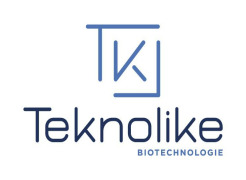
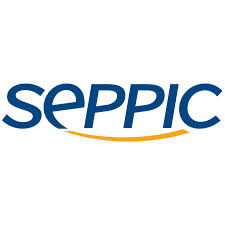
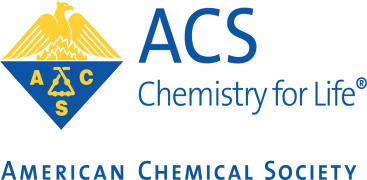




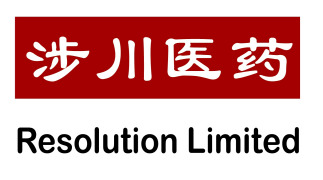
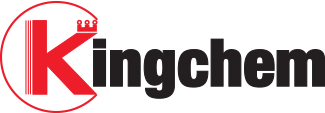
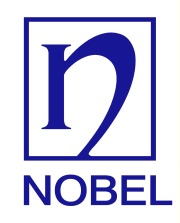
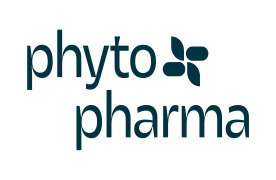

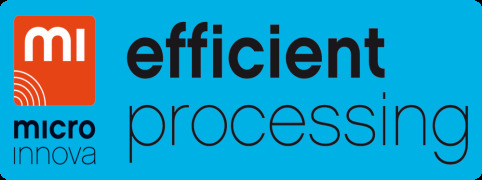



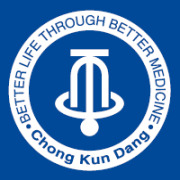


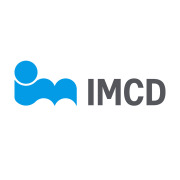
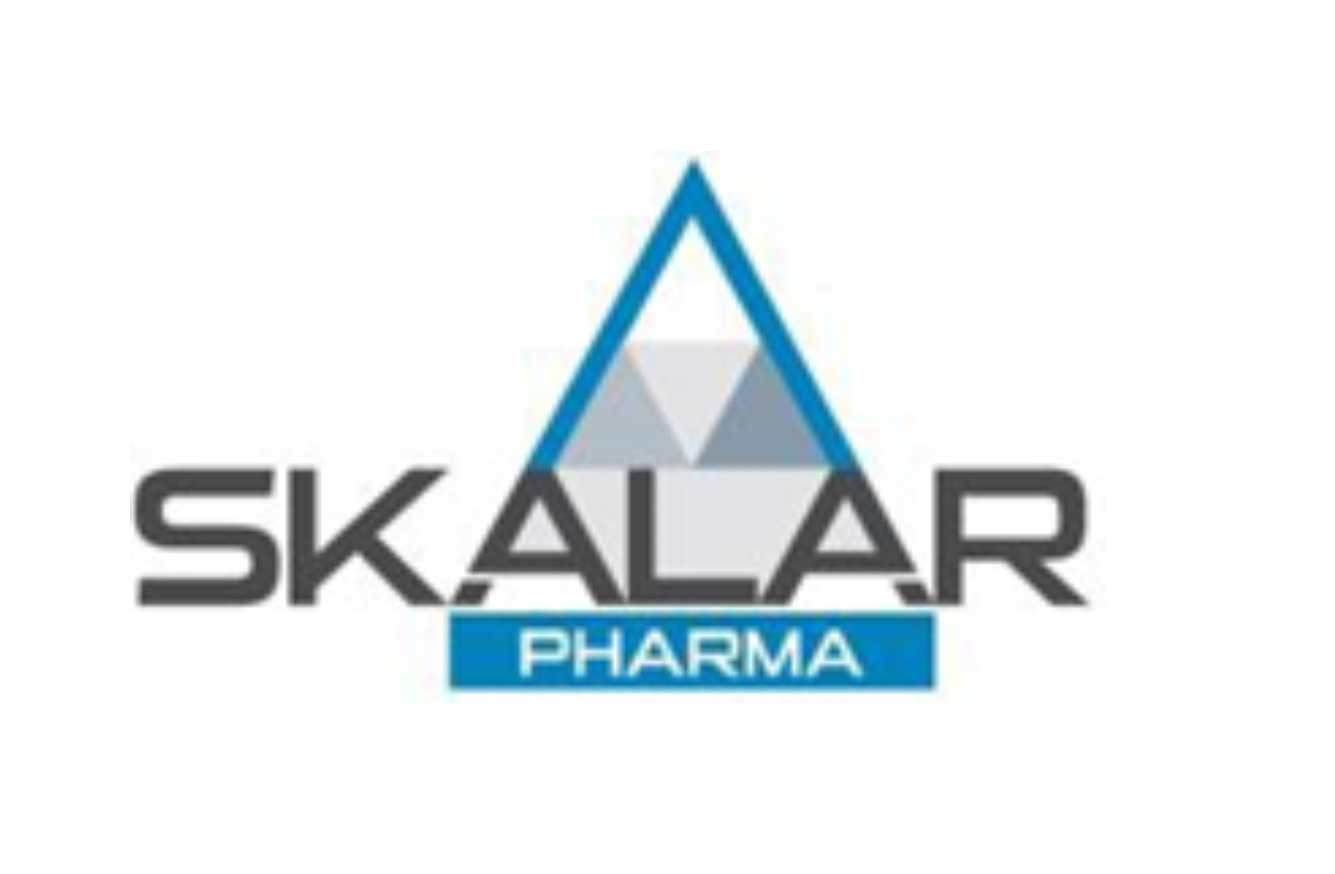
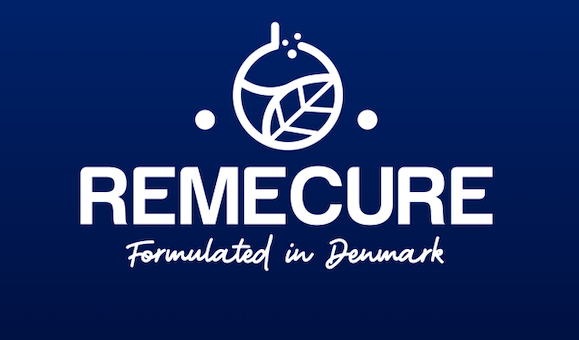
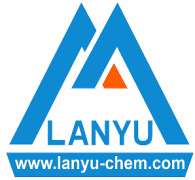


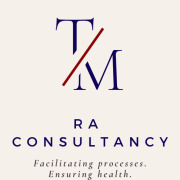


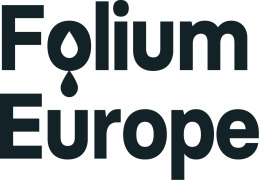

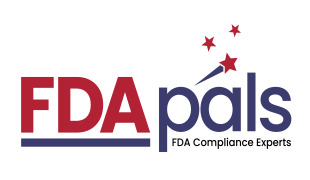


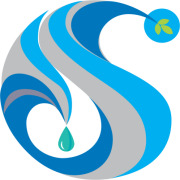
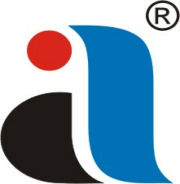


-comp246169.jpg)

-comp315635.png)

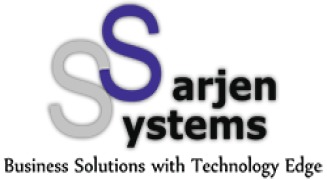
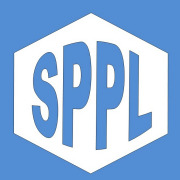

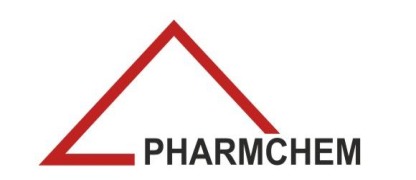
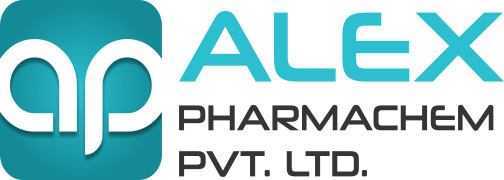
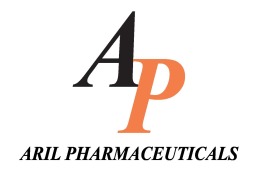

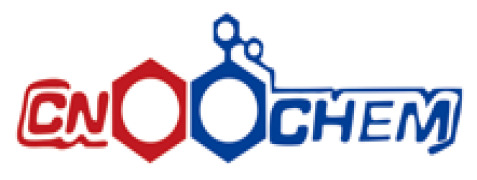




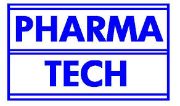
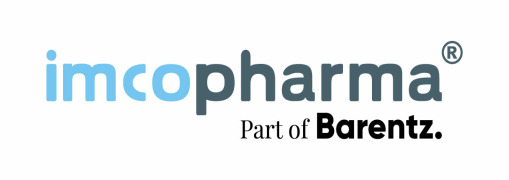
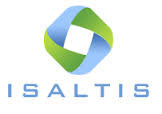

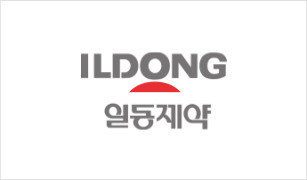

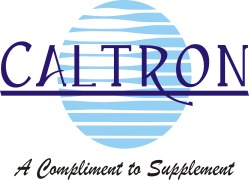
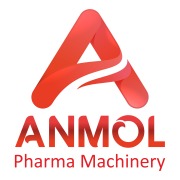
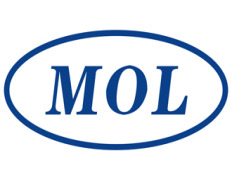
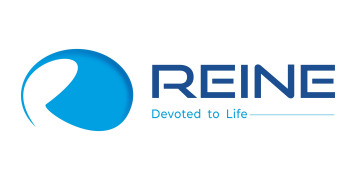
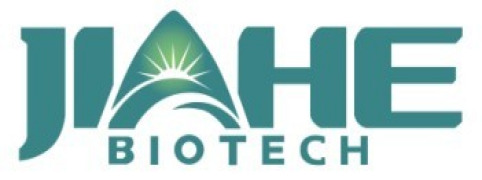

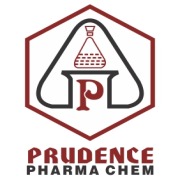
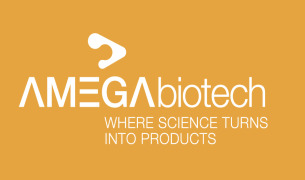

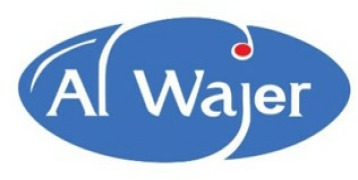
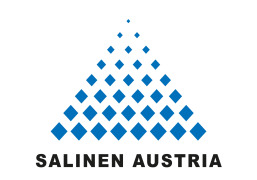


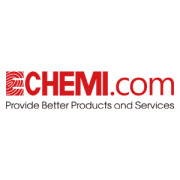
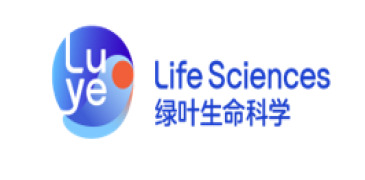

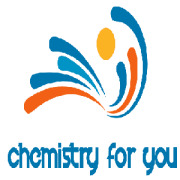
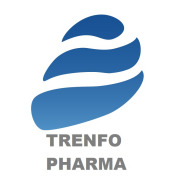
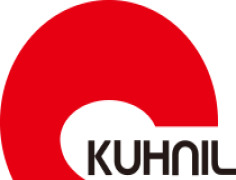




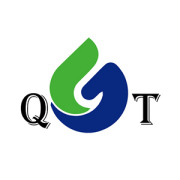


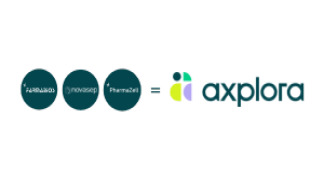

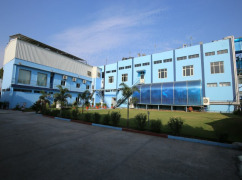




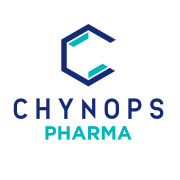
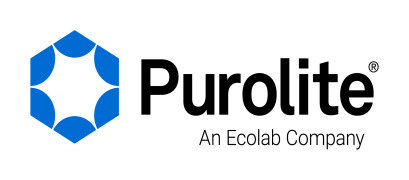


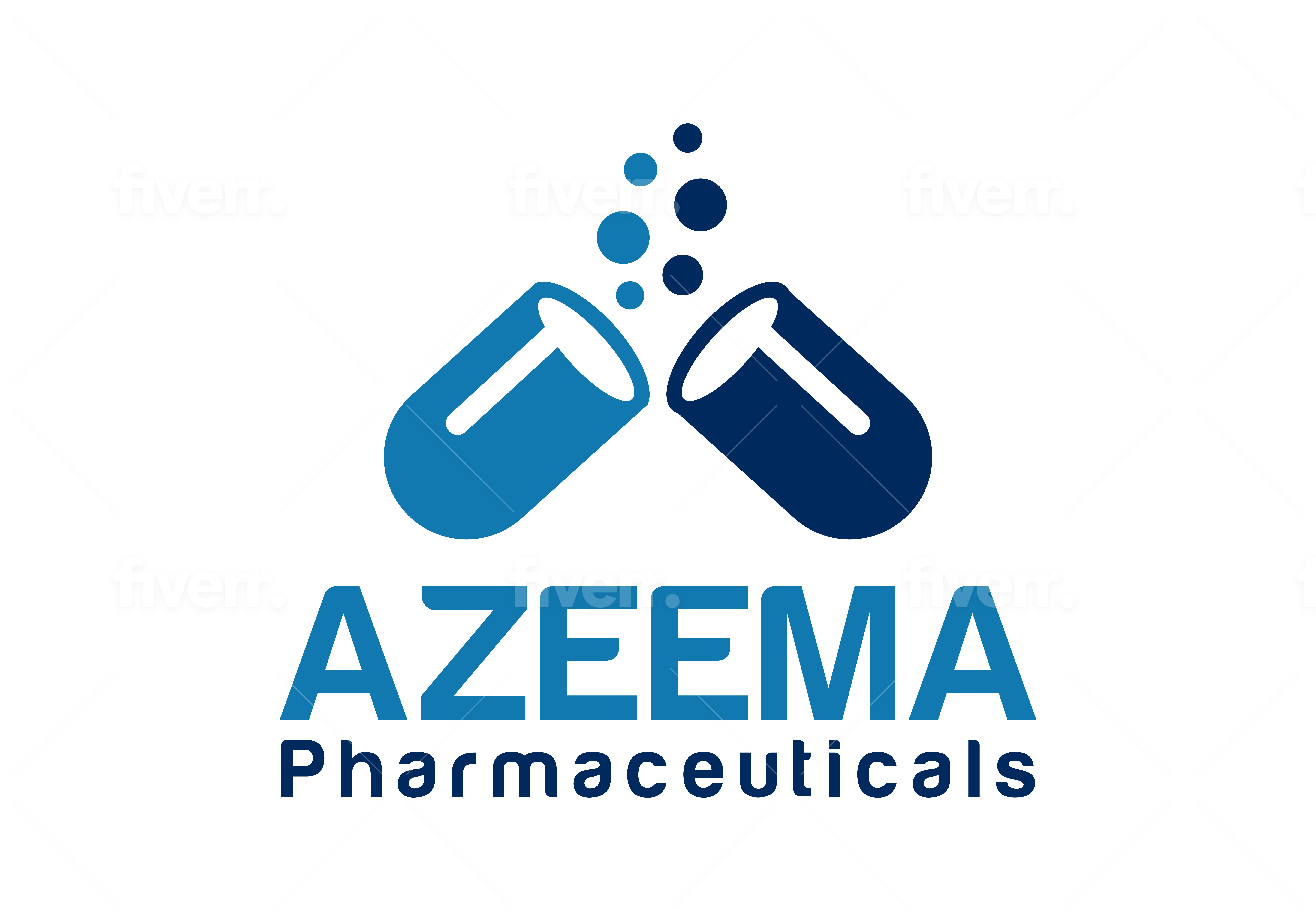



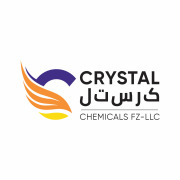

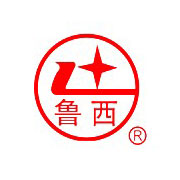

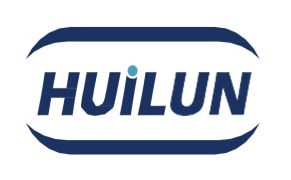





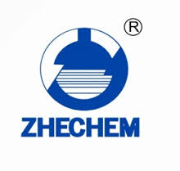
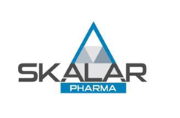









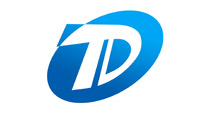


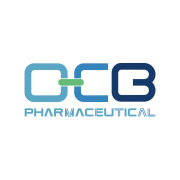

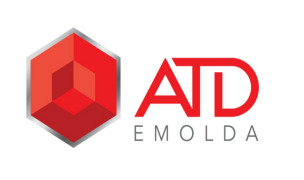

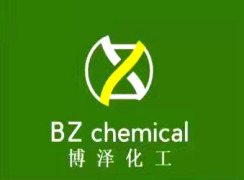

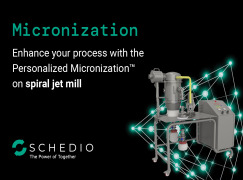

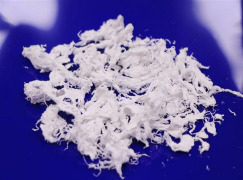
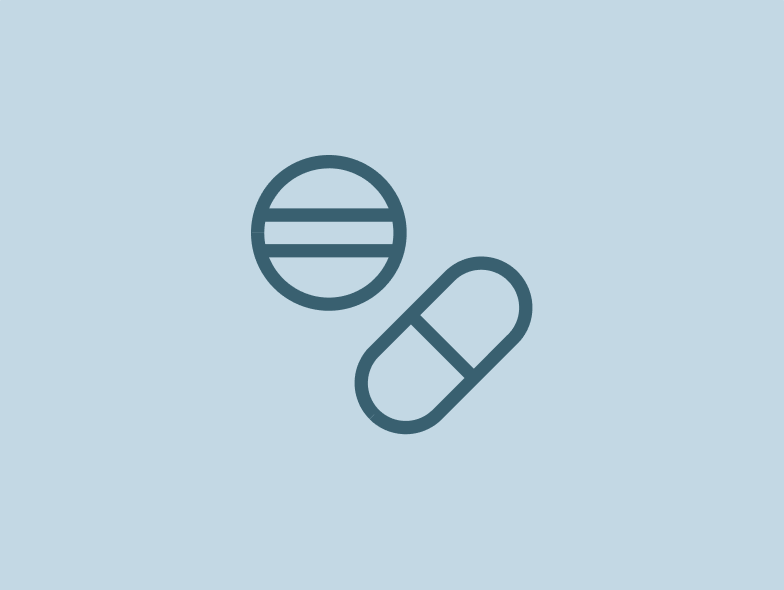

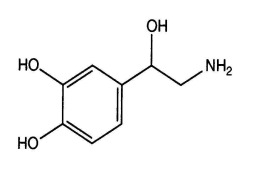
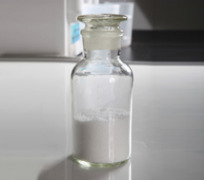





![Acepromazine maleate [vet]](https://www.cphi-online.com/46/product/123/61/69/p1236169th_S.jpg)
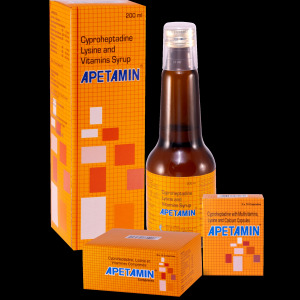
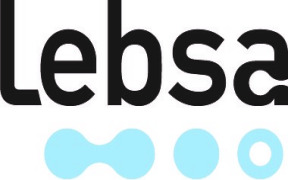
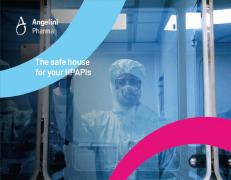


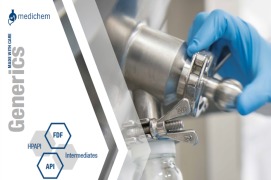










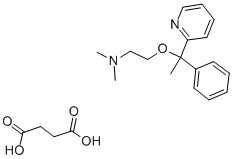


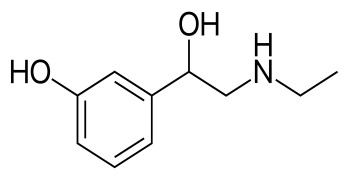
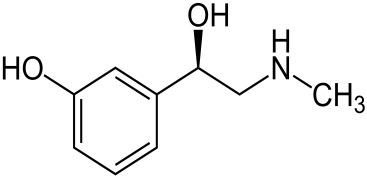




![Doramectin [vet]](https://www.cphi-online.com/46/product/123/61/71/p1236171th_S.jpg)
![Acetylsalicylic acid [human + vet]](https://www.cphi-online.com/46/product/123/78/71/p1237871th_S.jpg)
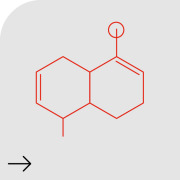
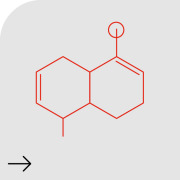
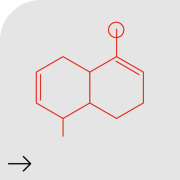
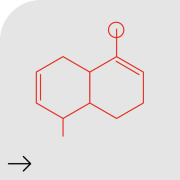
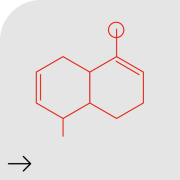
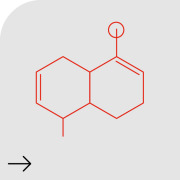
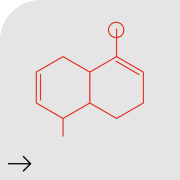
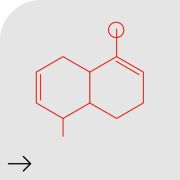
![Levothyroxine sodium [human + vet]](https://www.cphi-online.com/46/product/123/79/03/p1237903th_S.jpg)
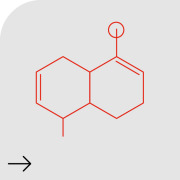
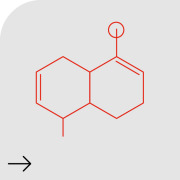
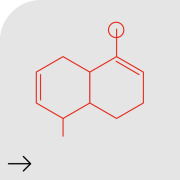
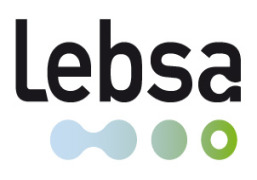









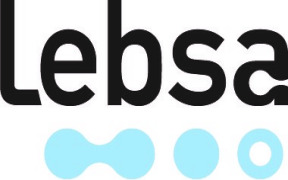


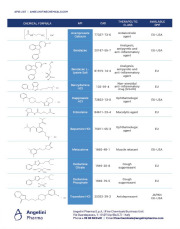
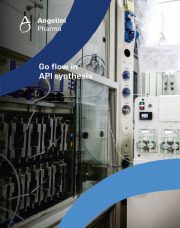


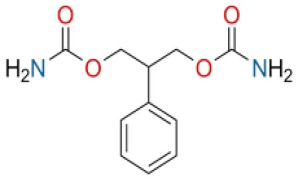
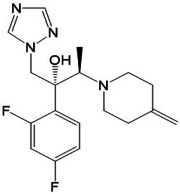














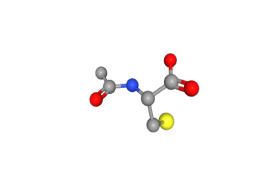
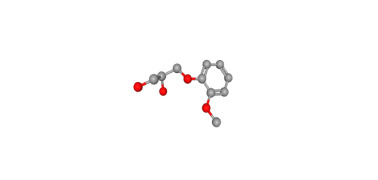
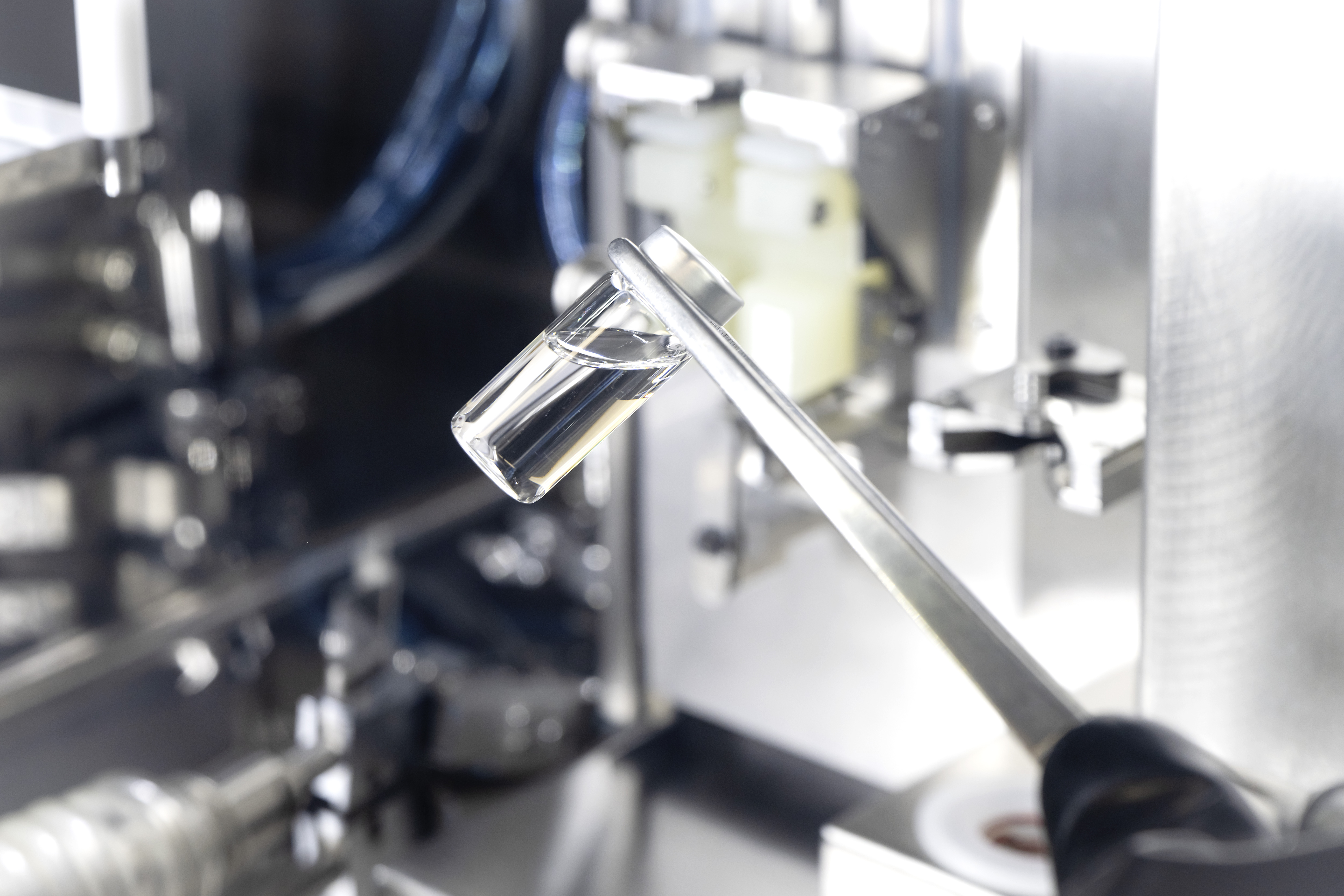
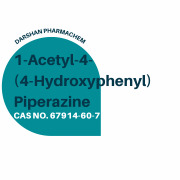
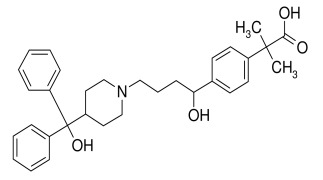





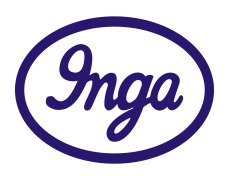
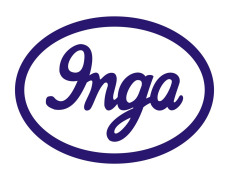







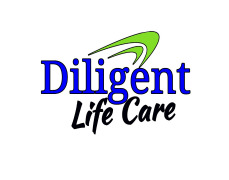
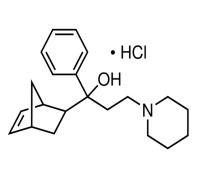







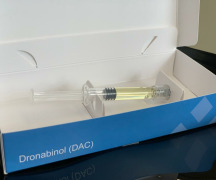


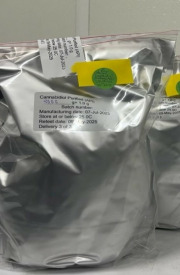





.png)

.png)
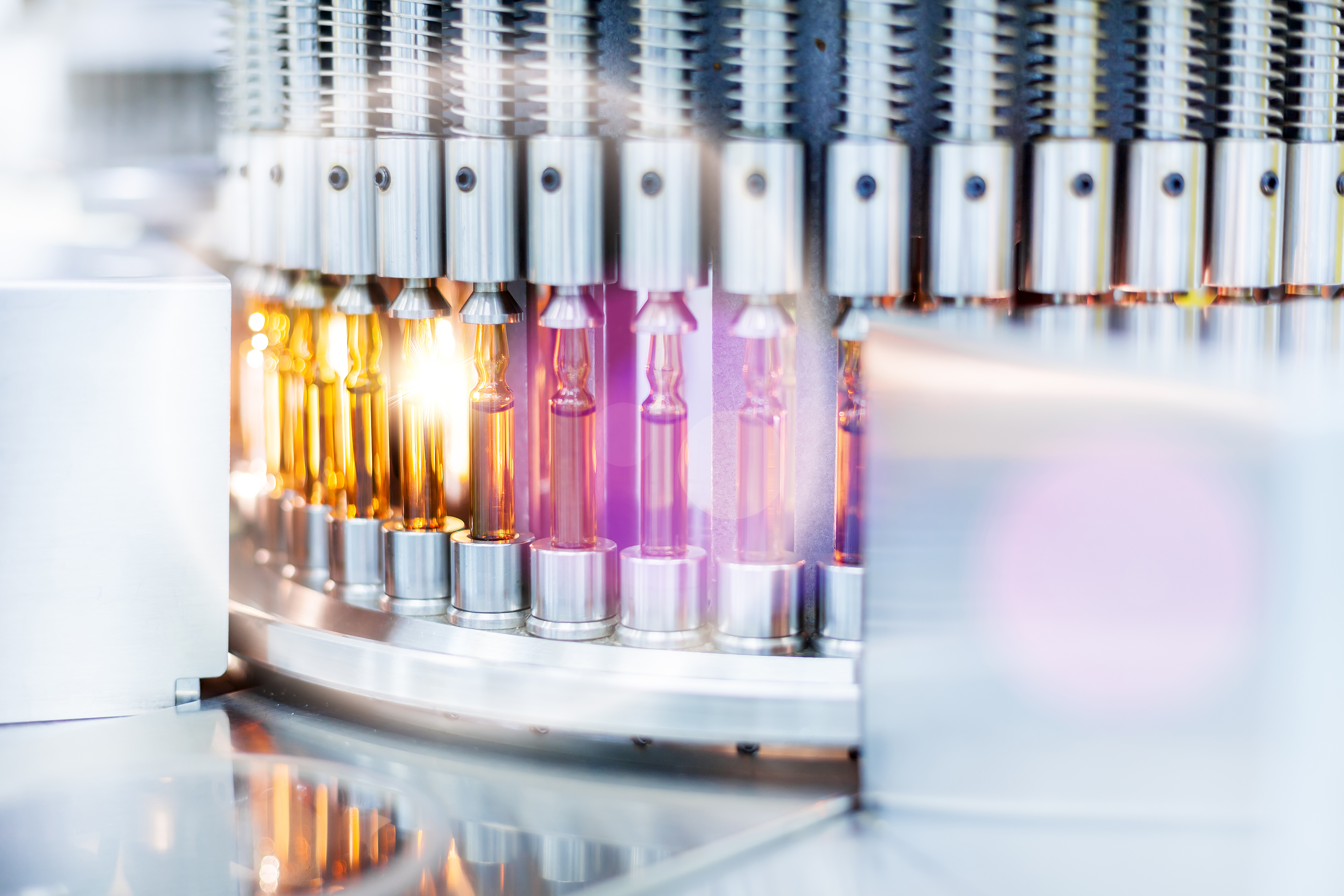


.jpg)





